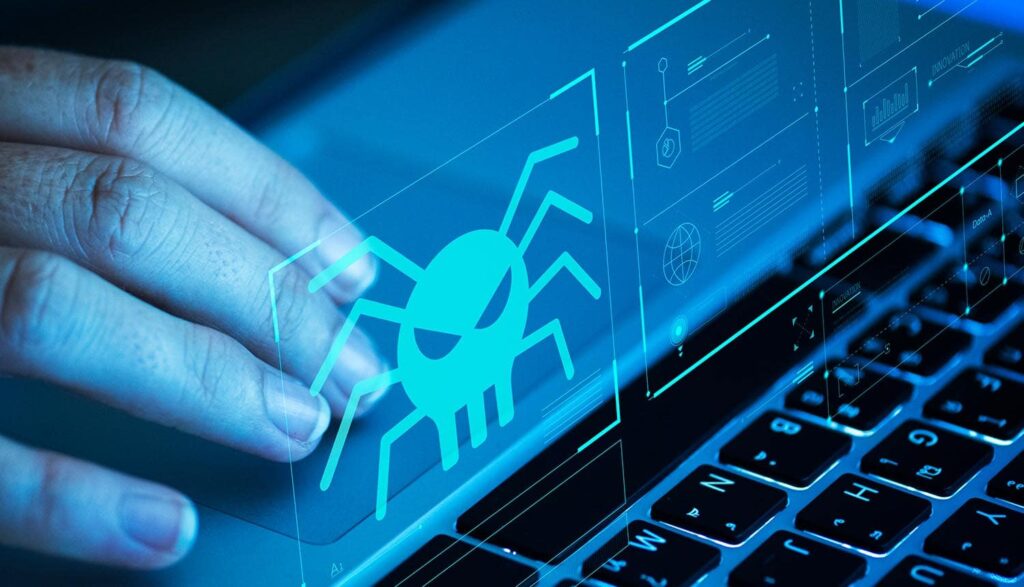Cybercriminals create malicious websites with the aim of leveraging malware to exploit an organization’s network vulnerabilities. Recent statistics show that a total of 5.5 billion malware attacks were identified all over the world in 2022. Implementing advanced security strategies like user authentication and data encryption can limit or eliminate such attacks.
In today’s digital world, securing your business against malicious websites is becoming a paramount concern worldwide. It’s important to understand that cybercriminals make these malicious websites and add links to them in advertisements on popular websites to hack organization resources and information. Businesses must fully comprehend what malicious websites are in order to safeguard themselves from such attacks.
Artificial Intelligence (AI) has emerged as a vital tool in combating malicious websites and mitigating cyber threats. With its ability to analyze patterns, detect anomalies, and automate response actions, AI has been a game-changer in the realm of cybersecurity. AI-powered systems can proactively identify malicious websites based on their behavior and characteristics, far more efficiently and effectively than traditional approaches. These systems are capable of learning from each interaction, constantly improving their detection capabilities and adapting to new and evolving threats. For example, AI can spot subtle changes in website code or behavior that may indicate a potential threat, even before a human analyst becomes aware of it.
Furthermore, AI plays an instrumental role in protecting users from phishing attacks, a common strategy employed by malicious websites. Phishing attacks trick users into providing sensitive information, such as login credentials, by mimicking legitimate websites. AI can help by analyzing the website’s features, assessing the credibility of its contents, and cross-referencing it with known phishing sites. This helps detect potential phishing websites in real-time, protecting users from falling prey to such scams. Not only does AI enhance security measures, but it also alleviates the strain on cybersecurity personnel, enabling them to focus on complex tasks that require human intervention.
What is a Malicious Website?
Cybercriminals create malicious websites to cause harm and steal organizational data for manipulation or ransom. A malicious website can harm visitors in many ways, but the most common is by infecting their computers with malware. These websites prompt users to click on suspicious links or automatically start downloads that install malware on your system.

How To Spot Malicious Websites?
Cybercrime is a significant threat to internet users therefore, they must ensure they are only visiting websites that are safe. To do this, they must learn to spot different signs that can help determine if a website will compromise their systems. Some of these signs include:
Antivirus or Browser Alert
There are numerous ways to tell if a website is unsafe. One of the most evident signs is if your browser or antivirus tells you it’s dangerous to continue. Most browsers will warn you if a site is phishing or has spyware. In such cases, it’s best to avoid accessing the website.
Suspicious URLs
Be alert of websites with strange or misspelled domain names or URLs. Malicious websites often copy legitimate sites by using minor variations in the URL, such as replacing letters with numbers or hyphens. Make sure that the URL starts with “https://” instead of “http://” as this shows if the website is secure and encrypted.
Websites With Sounds and Visual Noise
Websites that are full of visual noise may confuse you. With your attention distracted by all the stimuli you receive, you might accidentally click on a link that leads to a malware download. People often click on such visuals just to try to escape the ads. However, it’s better to exit such websites immediately as it can help keep your system secure.
Fake Download Buttons
Scammers often use fake download buttons to trick people into downloading viruses and other malicious software. A typical example is when people seek access to a paid program for free. Since it is illegal to distribute copyrighted material for free, scammers create fake download buttons that lead to file hosting services.
Once the victim clicks the button, they may unknowingly download a virus that will track everything they type and send it back to the hacker. Such information may include login credentials for sensitive organizational data. Wrongful acquisition of such credentials can compromise organizational networks and may result in data breaches.
Fake Promotions or Rewards
There’s nothing more frustrating than accidentally clicking on a fake pop-up. These usually involve messages “Congratulations, you won!” or “You are our millionth visitor!” They may also have a flashing button that most people can accidentally click.
Once you click such a button, you are redirected to a malicious website, or your browser automatically begins to download harmful files. So the next time you see a pop-up, be careful; it could compromise your organization’s security posture.
Software Update Pops Ups
Have you ever been surfing the web when suddenly a pop-up appears, telling you that your browser is “out of date” and you need to download an update? All this is a fraud. These offers appear suddenly over a website’s content and will interfere with what you are doing. It’s important to understand that such pop-ups lead to malicious platforms and may lead to the exploitation of network vulnerabilities.
Unauthorized Automatic Downloads
Automatically downloading an unknown program is dangerous, so be extra careful when browsing the web. If, by accident, you enter a website that immediately starts downloading a program, it is very likely a malicious website. It’s not enough to just close the site — follow these steps to protect your device:
- Close the tab with the website.
- Close the browser.
- Go to your downloads folder and delete the downloaded file.
- Run your antivirus software and check your hard drive.
- Authorize actions recommended by the antivirus software.
How To Protect Data From Malicious Attacks?
Today, most businesses use online resources and applications to perform essential tasks. These resources and applications improve productivity and collaboration. However, they can lead to an exploitation of network vulnerabilities. Such a scenario can prevail due to careless behavior on the internet, often leading to malware entering your system.
It’s important to understand malware can compromise the security posture of your organization’s network infrastructure and may lead to data breaches. So, to protect your websites from malware, you should follow these essential tips:
- Enable two-factor authentication (2FA) to add an extra layer of security for access to your accounts.
- Use reliable antivirus and anti-malware tools on a working system from which you access files and applications on the internet.
- Implement a ban on automatically entering login credentials on unknown websites.
- Ensure that all your software and operating systems are up to date.
- Activate firewalls to protect your organization’s network infrastructure from unauthorized access.
- Segment networks into smaller groups to minimize the attack surface and reduce the potential impact of cyber threats.
- Use data encryption protocols to ensure that information that is wrongfully acquired is rendered useless.
- Leverage access control policies to provide access based on needs and job requirements.
- Give cyber security training to workers to stay ahead of possible threats.
- Monitor and update network security solutions to ensure they can withstand evolving cyberattacks.
Final Words
Businesses relying heavily on the use of online resources and applications can be exposed to malware attacks included by malicious websites. Therefore, it’s important to know how to spot malicious websites. When using the internet, you can spot a malicious website by suspicious URLs, browser alerts, unnecessary pop-ups, and more.
There are many ways to limit or eliminate the impact malicious websites may have on your organization’s network infrastructure. Some common examples of such techniques include using a 2FA solution, encrypting organizational data, deploying need-based access control policies, and segmenting your network.

